
- Tour Eiffel
- Biographies

Marie-André Ampère

- Inauguration
Propriétaire
Inscription
Situation : Paris, France
GPS : 48° 51' 30.13'' Nord / 2° 17' 40.13'' Est
Description
Ses dimensions
- Gustave Eiffel
Comment la visiter ?
Toutes les pages
Autres monuments
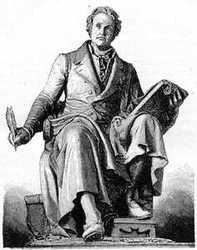
Portrait de Marie-André Ampère
André-Marie Ampère est l'un des 72 savants dont le nom est inscrit sur le premier étage de la tour Eiffel. Il est le 13e, sur la face tournée vers le Trocadéro.
André-Marie Ampère, mathématicien et physicien, est né à Lyon, sur la paroisse de Saint-Nizier, le 22 janvier 1775, de Jean-Jacques Ampère, négociant, et de Jeanne-Antoinette Sarcev de Sutières. Il est mort à Marseille le 10 juillet 1836. Après avoir enseigné la physique à Bourg-en-Bresse (Ain), où il écrivit ses Considérations sur la théorie mathématique du jeu, il fut nommé professeur au collège de sa ville natale, puis il vint à Paris comme répétiteur d'abord et professeur ensuite, à l’Ecole polytechnique. Successivement membre consultatif du Conseil des arts et métiers en 1806, inspecteur général de l'Université en 1808, membre de l'Institut en 1814, et dans les années qui viennent, correspondant de toutes les sociétés savantes du monde civilisé, comblé d'honneurs et de distinctions, Ampère, cependant, fuyait l'éclat, le bruit, et ne se sentait heureux que dans son modeste laboratoire, situé dans la maison portant le n° 19 de la rue des Fossés Saint-Victor, à Paris. Cet édifice a disparu pour faire place au passage de la rue Monge, percé sous le second Empire. C'est de là qu'est sortie une des plus fécondes découvertes de la science moderne, celle de l'électricité dynamique, qui repose sur la combinaison de l’électro-aimant. Elle fut faite avec la collaboration d'Arago. Du même coup qu'elle créait la télégraphie électrique, elle devenait la source de toutes les merveilleuses applications de l'électricité contemporaine.
En 1819, Œrsted, illustre physicien danois, avait observé que si l'on dispose parallèlement à une aiguille aimantée, mobile sur un pivot, un fil métallique traversé dans sa longueur par un courant d'électricité, l'aiguille quitte le méridien magnétique et se met en croix avec le fil. Mais ce phénomène offrait des incidents divers, selon que l'aiguille était ou n'était pas astatique, c'est-à-dire suivant que l'influence de la terre agissait ou n'agissait pas sur elle, et d'après le sens du courant et les positions relatives de l'aimant et du fil.
Ampère, avec un génie profond, pénétra ces problèmes divers et créa une formule ingénieuse renfermant toutes les circonstances. Après avoir multiplié les expériences, il découvrit, le 24 octobre 1820, que les courants électriques agissent les uns sur les autres. Ce fut, en effet, ce jour-là qu'il combina le premier électro-aimant dans un élan d'inspiration soudaine, suscité par une communication d'Arago, faite à l'Académie des sciences de Paris. Constatant qu'un fil de cuivre parcouru par un courant électrique acquérait la propriété d'attirer le fer, il conçut l'idée de plonger un outil dans la spirale qu'il tenait à la main et que traversait un courant. La force attractive se trouva centuplée aussitôt. C'est ainsi que l'appareil le plus précieux de la physique fut improvisé par un mouvement instinctif du génie.
Sur ce grand fait résolu par la pratique, Ampère a fondé une science nouvelle, l'électrodynamique, en réunissant deux notions jusque-là distinctes : l'électricité et le magnétisme. Cette découverte de génie est codifiée dans les annales de la science sous la dénomination de lois d'Ampère.
En mémoire de ce fait capital, le Congrès universel des Electriciens, tenu à Paris, en 1881, pour fixer la valeur des unités électriques, a donné le nom d’ampère à l'unité d'intensité d'un courant. C'est encore ainsi qu'on a décidé d'appeler ampère-heure la quantité d'électricité traversant un circuit durant 60 minutes et de désigner sous le nom d’ampèremètre, une sorte de galvanomètre, spécialement destiné à la mesure de l'intensité électrique qui parcourt un circuit.
Cet hommage que les savants veulent rendre aux créateurs d'une science, en empruntant leurs noms pour former le vocabulaire scientifique, part évidemment d'un noble sentiment. Cependant nous pensons que c'est aller à l'encontre de la clarté et de la précision, et qu'il serait préférable de prendre les termes dans la langue grecque, comme on l'a fait, par exemple, lorsqu'on a établi le système métrique. Sur ce point, nous sommes de l’avis de M, Berthelot, l'illustre créateur de la mécanique chimique et de la thermochimie, membre de l'Institut, qui dans la séance de l'Académie des sciences de Paris du 23 septembre 1889, a présenté de justes critiques à ce sujet. C'est avec raison qu'il a fait observer que, s'il est utile et nécessaire de définir certaines unités abstraites par des mots caractéristiques, il y a, peut-être, quelques inconvénients à les désigner par des noms propres, comme on tend à le faire en électricité et en mécanique, depuis quelques années. Cette manière de procéder est contraire à l'esprit qui a dirigé les sciences modernes jusqu'à notre époque. Elle risque d'enlever à l'expression des phénomènes et des lois son caractère de généralité absolue, indépendante des personnes, des temps, des nationalités. Elle est capable encore de susciter des compétitions étrangères à la science, nuisibles à ses véritables intérêts, sans compter qu'elle est obscure et exige un double effort de compréhension.
Cela dit, revenons à Ampère, qui fut un très vaste esprit, ouvert à toutes les conceptions intellectuelles, et qui aurait été sûrement de cette opinion, d'après ce que nous avons appris de son caractère par Arago et son fils, J.-J. Ampère. Il était âgé à peine de dix-huit ans que déjà il avait inventé une langue universelle destinée, en remplaçant le nombre infini des idiomes parlés sur la terre, à rapprocher les hommes et à consolider la paix. En 1834, il mit au jour, sous le titre d'Essai de la philosophie des sciences, une classification nouvelle de toutes les connaissances humaines, avec un exposé de la marche qu'il avait suivie et des considérations qui l'avaient inspiré. Cet ouvrage témoigne de la puissance de son cerveau encyclopédique et métaphysique. Il constitue un inventaire complet de ce que nous savons, avec des vues profondes et ingénieuses.
La classification d'Ampère tend à établir un ordre naturel et vrai dans la distribution des sciences. Ce n'est point un tableau alphabétique dressé avec parti-pris; c'est un exposé tracé par voie de découvertes successives et de perfectionnements graduels.
Ampère raconte dans une préface lucide et savante, la manière lente dont cet ordre s'est formé, ainsi que l'occasion, les tâtonnements, les indications apparues au fur et à mesure de ses études. Il fait voir comment la symétrie constante des divisions et des subdivisions, qui semblerait au premier abord un caractère artificiel, se rattache au contraire à la nature même de notre intelligence et puise sa raison dans la forme et les lois de nos facultés.
Ampère consacre la première partie de son ouvrage au développement et à la justification du principe dans l'ordre des sciences qu'il appelle cosmologiques, c'est-à-dire relatives à tous les êtres matériels dont l'univers est composé. La seconde partie complète ce développement en ce qui concerne les sciences noologiques, c'est-à-dire relatives à l'étude de la pensée et des sociétés humaines. Il donne dans la troisième partie les principaux résultats de ses observations psychologiques qui, remontant aux années de sa jeunesse, devront le classer parmi les idéologistes contemporains, à côté de Maine de Biran, son ami.
Une pièce de vers latins est jointe au tableau final. Elle est dédiée à son fils Jean-Jacques Ampère. En voici la traduction :
A mon excellent et bien aimé fils. — Poème récapitulatif. — Préliminaire. — Pour posséder une notion approfondie de l’univers, de sa vie, de sa puissance, il faut d'abord se rendre compte de son mouvement et de son étendue ; ensuite vient l'étude des éléments qui le forment et des êtres qui l’habitent.
Les vers d'Ampère sont d'une excellente latinité, d'une précision parfaite et sans sécheresse. Ils reproduisent le ton des exposés de Lucrèce. Après on lit les prolégomènes et le tableau général de cette classification nouvelle des connaissances humaines.
A la fin de l'année 1793, Ampère reçut une commotion terrible. Il vit son père accusé de sympathie pour l'aristocratie lyonnaise, périr sur l'échafaud. Il faillit en perdre la raison, et il ne put se calmer à la longue, qu'en se consacrant, avec sa passion accoutumée, à la poésie, à la musique, à la botanique. En herborisant, il devait rencontrer la jeune fille destinée à devenir sa femme. Les mariages d'amour sont fréquents parmi les savants, et souvent ils sont heureux jusqu'au bout, témoins ceux de Gay-Lussac , Malus, Monge , et de bien d'autres moins célèbres, quand l'intelligence et le cœur de l'épouse se mettent à la hauteur du génie de 1 époux. De cette union, qui fut brisée par la mort prématurée de Mr Ampère, il naquit un enfant unique qui devint la consolation du malheureux savant et qui s'est illustré dans les lettres et les études historiques. C'est J.-J. Ampère, mort en 1864, membre de l'Académie française. La ville de Lyon a érigé solennellement, le 8 octobre 1888, en présence de M. Carnot, président de la République, une belle statue à Ampère. Elle est due au sculpteur Charles Textor. C'est elle que notre dessin reproduit La ville de Paris a donné son nom à une des rues de la rive droite de la Seine. Son éloge a été prononcé, au nom de l'Institut de France, par M. Alfred Cornu, membre de l'Académie des sciences. Deux études remarquables qui se complètent l'une par l'autre, ont été consacrées aux découvertes et aux écrits d'Ampère par Littré et Sainte-Beuve. Ses œuvres ont été publiées par les éditeurs Bachelier et Mallet-Bachelier, les prédécesseurs de MM. Gauthier-Villars et fils.
Voir aussi :
Toutes les biographies
- Emplacement
- La tour en chiffres
- Histoire de l'art
- Oeuvres artistiques
- Littérature
- Rez-de-chaussée
- Etage intermédiaire
- Les 72 savants
- Copies et répliques
- Watkin's tower
- Ascenseurs Fives-Lille
- La tour en 1900
- Chronologie
- Contexte technologique
- Les autres projets
- Réticences des artistes
- Construction
- Medaille commémorative
- Rénovations
- Procés droit de reproduction
- Arnaques diverses
- Imprimerie du figaro
- La tour et l'expo
- Les entreprises Eiffel
- Société d'exploitation
- Maurice Koechlin
- Emile Nouguier
- Stephen Sauvestre
- Jean Compagnon
- Adolphe Salles
- Jean Gobert
- Edouard Lockroy
- Franz Reichelt
- Contrato de concesion
- Tableros técnicos
- Cálculos de fuerza
- Cálculo por peso
- Cálculo por viento
- Cálculo del peso de los visitantes
- Trabajo de taller
- Fundaciones
- Rentabilidad
- Genio civil
- A voir sur la tour
- Récit d'une visite
- Images d'une visite
- Visiteurs célèbres
- Observations météo 1889
- Observations météo 1890
- Résistance de l'air
- Pression de l'air
- Manomètre hautes pressions
- Spectre solaire
- Absorptions des radiations
- Navigation aérienne
- Radiodiffusion
- Téléphotographie
- Télégraphie optique
- Phénomènes naturels
- Effets de la foudre
- Oscillations du sommet
- Effets de la montée

Copyright 2013 - 2024 - Toute reproduction interdite sans l'autorisation de l'auteur. Ce site Internet est un site privé, non officiel, issu du travail de compilation des oeuvres de différents auteurs. Sauf mention contraire, les photos sont la propriété du webmaster. Toute utilisation des textes, photos ou autres éléments de ce site internet sont interdits sans accord du webmaster. Pour le contacter, utilisez le lien sur la page crédits . Sources documentaires : cliquez ici . Pour consulter la politique de confidentialité du site veuillez cliquer ici : Politique de confidentialité .
Sites Internet du même auteur : Les Pyrénées-Orientales , Marguerite Duras , Merveilles du monde , Empereurs romains .
How to get to the Eiffel Tower
The Eiffel Tower is located in the heart of Paris, in the 7th arrondissement, and is very easy to access. We recommend taking public transport to come here: metro, RER, or bus. The Eiffel Tower is very well-connected to the metro – there are three stations in the nearby area. On line 6, the Bir Hakeim station is the closest, less than 10 minutes’ walk from Entrance 1 (Allée des Refuzniks) of the monument. Metro stations Trocadéro (line 9) and Ecole Militaire (line 8) are 15 minutes by foot from the Tower. Another option is line C of the RER train network, which serves the Champ de Mars-Tour Eiffel station, located 5 minutes’ walk from Entrance 1. You can also come by bus: lines 82, 30 and 42 serve stops 5 minutes’ walk from Entrance 2 of the Eiffel Tower (Allée Jean Paulhan). Bus lines 69 and 86 stop at the Champ de Mars, 7 minutes ...
The Eiffel Tower is located in the heart of Paris, in the 7th arrondissement, and is very easy to access. We recommend taking public transport to come here: metro, RER, or bus. The Eiffel Tower is very well-connected to the metro – there are three stations in the nearby area. On line 6, the Bir Hakeim station is the closest, less than 10 minutes’ walk from Entrance 1 (Allée des Refuzniks) of the monument. Metro stations Trocadéro (line 9) and Ecole Militaire (line 8) are 15 minutes by foot from the Tower. Another option is line C of the RER train network, which serves the Champ de Mars-Tour Eiffel station, located 5 minutes’ walk from Entrance 1. You can also come by bus: lines 82, 30 and 42 serve stops 5 minutes’ walk from Entrance 2 of the Eiffel Tower (Allée Jean Paulhan). Bus lines 69 and 86 stop at the Champ de Mars, 7 minutes from Entrance 1. The 72 drops you off near Trocadéro, around 15 minutes away by foot. If you want to drive to the area near the Eiffel Tower, we recommend parking in a public parking lot. You have several options for paid parking lots, including the Quai Branly – Tour Eiffel parking lot located just over 5 minutes by foot from Entrance 2 (Allée Jean Paulhan). Use our interactive map below to explore the area and see various modes of transport and routes to get to the Eiffel Tower.
The Eiffel Tower is accessible to all publics on public transport and cars.
Find out how to come here
- On the Metro Line 9, line 8 & line 6
- On the RER Line C
- By bus Line 82, line 42
- By Vélib Free bike loan
- By car Car park list
- By boat You can travel to the Eiffel Tower by boat along the Seine
On the Metro
You can travel to the Eiffel Tower on different Metro lines. Find out which stations serve the Eiffel Tower
- Trocadéro metro walk
- Bir-Hakeim metro walk
- Ecole militaire metro walk
You can travel to the Eiffel Tower on line C of the RER. Find out which station serves the Eiffel Tower
- Champ de mars - Tour Eiffel walk
You can travel to the Eiffel Tower on different bus routes. Find out which stops serve the Eiffel tower
- Eiffel Tower walk
- Tour Eiffel walk
- Champ de Mars walk
Velib is 24/7 self-service bike hire service. A pleasant way to travel to the Eiffel Tower is by riding through the streets of Paris! !
- 2 Av. Octave Gérard station 1 min walk
- 2 Quai Branly station walk
- 43 avenue Rapp station 2 min walk
- 36 Avenue de Suffren station walk
If you want to come to the Eiffel Tower in your car we suggest you park in one of the covered car parks close to the tower such as the quai Branly less than 300 metres from the Tower! !
- Quai branly-Tour Eiffel car park walk
- Parking Pullman Tour Eiffel walk
- 443 Avenue Joseph Bouvard, walk
- 2 Place Joffre, 75007 Paris walk
You can travel to the Eiffel Tower by boat along the Seine
- Batobus Tour Eiffel walk
Calculate your route
- Prices & Times
- Haut de page
Economy: from Consciousness to Science
Is the state of emergency the state of the future, openmind books, scientific anniversaries, the great barrier reef: the story of a natural wonder, featured author, latest book, andré-marie ampère, “the newton of electricity”.
On 24 November 1793, four years and a few months after the storming of the Bastille, Jean-Jacques Ampère , a prosperous Lyon silk merchant linked to the Girondist party, climbed the final steps to the scaffold. Arrested, tried and sentenced to capital punishment, on that day he was guillotined, one more victim of the vagaries of the revolution. The death by guillotine of his father, to whom he was very strongly attached, had a profound affect on the young André-Marie Ampère (20 January 1775 – 10 June 1836), then 18 years old, plunging him into a deep depression that kept him isolated for several years on the family’s country estate, ten kilometers from Lyon. There, almost completely cut off from the outside world, almost like a person possessed, he devoured his father’s magnificent library.
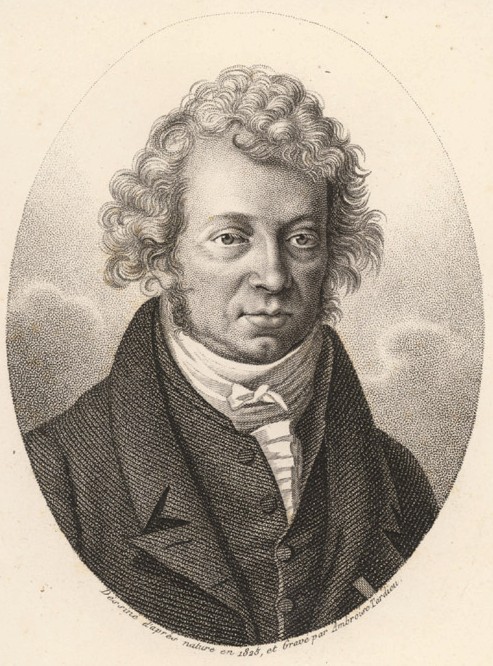
André-Marie Ampère was a child prodigy educated under the influence of the philosopher Rousseau , of whom his father was a fervent follower. Thus, adhering to the ideas set out in Emile , André-Marie never went to school, except to teach classes himself. After several years teaching mathematics, he held the post of professor of physics and chemistry at the Central School of Ain (Bourg-en-Bresse) until 1804, when he became professor of mathematical analysis at the École polytechnique in Paris.
In 1808, Napoleon appointed him inspector general of the French university system (a post he held until his death) and in 1814 he became a member of the French Academy of Sciences , in the geometry section. In contrast to his professional career, his personal life was complicated and very difficult, with moments like the death of his father by guillotine, the death of his first wife, separation from his second wife, etc.
Ampère is one of the 72 illustrious French scientists and engineers whose names appear over the four arches of the Eiffel tower, including Foucault, Fourier, Fresnel, Laplace, Lavoisier, Malus and Poisson.
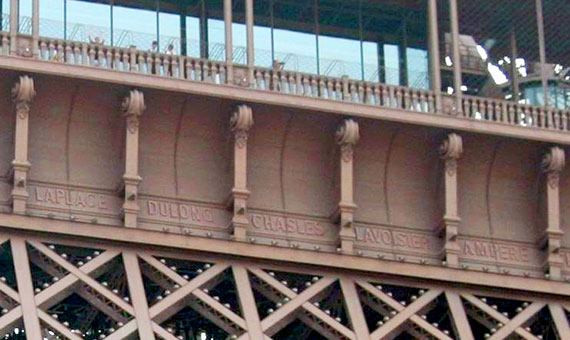
André-Marie showed a great capacity for mathematics and worked on optics and chemistry . In fact, he can be considered almost an important chemist, since he almost discovered chlorine, almost discovered iodine and almost discovered Avogadro’s law , which, unbeknownst to him, had been stated 3 years earlier and so in France is also known as Avogadro-Ampère’s law . Although he made contributions of some importance in mathematics (algebra, mathematical analysis and calculation of probabilities), undoubtedly his greatest contribution was made in the area of electromagnetism, at the age of 45 years.
The conflictus electrici and the “little guy” rule
In 1820 the Danish scientist Hans Christian Oersted discovered that an electric current deflected a nearby magnetized needle . If the electric current was capable of making a magnetized needle rotate, Oersted concluded, this current produced magnetic effects and so electricity and magnetism were not independent phenomena. He published his results in the article “Experimenta circa effectum conflictus electrici in acum magneticam” (Experiments on the effect of an electric current on a magnetic needle). This same year, Ampère heard of Oersted’s incredible discovery, the “conflictus electrici” capable of deflecting a magnetized needle. Oersted had found that electricity produces magnetic effects. Unlike other French scientists who thought great discoveries could only be made in France, Ampère studied and drew important conclusions from this experiment, which up to this time had been great discovery, but nothing more. In the summer of 1820 he repeated Oersted’s experiment and concluded that if an electric current produces magnetic effects on a magnet, “why would it not produce magnetic effects on another current?” In September of that year he presented his results to the Academy of Sciences in several sessions. In one of these sessions he presented his little guy rule ( “reglè du bonhomme” ) :
“This little man is placed in the direction of the current (the current runs through his body from the feet to the head), the man looks at the point that interests us and extends his left arm so that it indicates the direction of the magnetic field”.
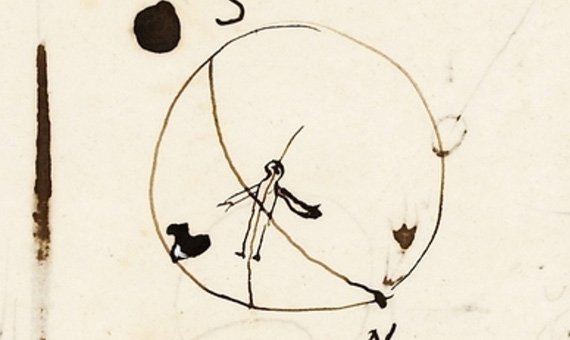
In another of the sessions given to the Academy, Ampère announced a new finding: it was possible for there to be mutual action between currents without the intervention of a magnet. Two parallel wires carrying electric currents attract or repel each other depending on whether the direction of the currents is equal or opposite. Shortly after this Ampère formulated the mathematical expression that explained these forces between electrical currents.
The Newton of electricity
In 1826 he published “The Mathematical Theory of Electrodynamic Phenomena Deduced Solely from Experiment” , a book in which he states that “magnetism is electricity in motion” and “magnetic phenomena depend only on the existence and motion of electrical charges”. Ampère explained the existence of permanent magnets, introducing the idea that the magnetism of permanent magnets is produced by a small current at molecular level, which he called an electrodynamic molecule and which results in a surface current, la Ampere current , similar to the real current flowing through a solenoid . Thus, all magnetic effects are due to the movement of electric charges, both at the macroscopic and microscopic level. The ampere , the unit of electric current intensity, one of the basic units in the International System of Units , is so named in his honor.

There is no doubt that Ampère is one of the “greats” of electromagnetism and it was precisely another of the “greats”, James Clerk Maxwell , who, in his Treatise on Electricity and Magnetism, named him “the Newton of electricity” :
“The experimental investigation by which Ampere established the law of the mechanical action between electric currents is one of the most brilliant achievements in science. The whole theory and experiment, seems as if it had leaped, full grown and full armed, from the brain of the “Newton of Electricity”. It is perfect in form, and unassailable in accuracy, and it is summed up in a formula from which all the phenomena may be deduced, and which must always remain the cardinal formula of electro-dynamics ».
André-Marie Ampère died on 10 June 1836 in Marseille, where, despite his poor state of health, he had traveled to carry out a university inspection. He is buried in the Montmartre cemetery in Paris, in a tomb that he shares with his beloved and admired father Jean-Jacques.
Augusto Beléndez
Professor of Applied Physics at the University of Alicante and member of the Spanish Royal Society of Physics
Bibliography
Beléndez, A., “Electromagnetic Unification: 150th Anniversary of Maxwell’s Equations”, Mètode, No. 84 (2015).
Díaz-Hellín, J. A., El gran cambio de la Física. Faraday (Nivola libros y ediciones. Madrid, 2001).
Fernández-Rañada, A., “Mi clásico favorito: André-Marie Ampère”, Revista Española de Física, Vol. 28, No. 2, 46-50 (2014).
Clerk Maxwell, J., A Treatise on Electricity and Magnetism (Clarendon Press, Oxford, 1873).
Pérez, M. C., y Varela, P., Orígenes del electromagnetismo: Oersted y Ampère (Nivola libros y ediciones. Madrid, 2003).
Udías, A., Historia de la Física: De Arquímedes a Einstein (Síntesis. Madrid, 2004).
The Mechanical Universe. Episode 35: “The Magnetic Field” (CALTECH, 1985).
André-Marie Ampère, Wikipedia (Consulted April 19, 2017).
Ampère et l’histoire de l’électricité
Related publications
- Newton and the Equations of Nature
- Faraday and the Electromagnetic Theory of Light
- Faraday, the Apprentice Who Popularized Electricity
More about Science
Environment, leading figures, mathematics, scientific insights, more publications about augusto beléndez, comments on this publication.
Morbi facilisis elit non mi lacinia lacinia. Nunc eleifend aliquet ipsum, nec blandit augue tincidunt nec. Donec scelerisque feugiat lectus nec congue. Quisque tristique tortor vitae turpis euismod, vitae aliquam dolor pretium. Donec luctus posuere ex sit amet scelerisque. Etiam sed neque magna. Mauris non scelerisque lectus. Ut rutrum ex porta, tristique mi vitae, volutpat urna.
Sed in semper tellus, eu efficitur ante. Quisque felis orci, fermentum quis arcu nec, elementum malesuada magna. Nulla vitae finibus ipsum. Aenean vel sapien a magna faucibus tristique ac et ligula. Sed auctor orci metus, vitae egestas libero lacinia quis. Nulla lacus sapien, efficitur mollis nisi tempor, gravida tincidunt sapien. In massa dui, varius vitae iaculis a, dignissim non felis. Ut sagittis pulvinar nisi, at tincidunt metus venenatis a. Ut aliquam scelerisque interdum. Mauris iaculis purus in nulla consequat, sed fermentum sapien condimentum. Aliquam rutrum erat lectus, nec placerat nisl mollis id. Lorem ipsum dolor sit amet, consectetur adipiscing elit.
Nam nisl nisi, efficitur et sem in, molestie vulputate libero. Quisque quis mattis lorem. Nunc quis convallis diam, id tincidunt risus. Donec nisl odio, convallis vel porttitor sit amet, lobortis a ante. Cras dapibus porta nulla, at laoreet quam euismod vitae. Fusce sollicitudin massa magna, eu dignissim magna cursus id. Quisque vel nisl tempus, lobortis nisl a, ornare lacus. Donec ac interdum massa. Curabitur id diam luctus, mollis augue vel, interdum risus. Nam vitae tortor erat. Proin quis tincidunt lorem.
“We are Working on Robots that Can Reproduce and Then they Can Die”
Do you want to stay up to date with our new publications.
Receive the OpenMind newsletter with all the latest contents published on our website
OpenMind Books
- The Search for Alternatives to Fossil Fuels
- View all books
About OpenMind
Connect with us.
- Keep up to date with our newsletter
BUREAUX ET ACTIVITÉS
4 avenue Ampère
78180 Montigny-Le-Bretonneux
Vincent Leroy [email protected] 06 23 37 12 66
Description du site
Implanté dans le Parc d’activité du Pas du Lac, cet ensemble immobilier à l’accès sécurisé est composé de 5 bâtiments (allant jusqu’au R+3 pour certains), 325 parkings extérieurs et 10 box.

Date de livraison

DATE D'EXTENSION
Accessibilité
Future ligne 18 du Grand Paris Express
Gare SNCF ligne N / ligne U
ACCÈS ROUTIER
À 22 km de Paris – À proximité des : A12 – A 13 – A86 – RN 10 / RN 12
Localisation
Photos du site

Vous avez des questions ?
N’hésitez pas à nous contacter pour de plus amples informations.
Veuillez laisser ce champ vide.
Notre portefeuille
Notre patrimoine
Inscrivez-vous à nos flash infos
Je suis Analyste Banque corporate Gestionnaire de fonds Actionnaire institutionnel Autre actionnaire Administrateur CAC / Juriste Journaliste Locataire Autre
La Société de la Tour Eiffel utilisera les informations fournies sur ce formulaire pour vous contacter et vous envoyer ses communiqués de presse. À ces fins, merci de cocher la case ci-dessous :
Je souhaite recevoir par mail les informations de la Société de la Tour Eiffel
Les informations recueillies par l’intermédiaire de ce formulaire font l’objet d’un traitement informatique par la Société de la Tour Eiffel, en sa qualité de responsable de traitement, afin de vous adresser sa newsletter et ses communiqués de presse. Vous disposez du droit de demander à la Société de la Tour Eiffel l'accès à vos données à caractère personnel, leur rectification ou effacement, ou une limitation du traitement relatif à votre personne en vous adressant à : Société de la Tour Eiffel - 11, avenue de Friedland – 75008 Paris, France – Téléphone : 01 53 43 07 06 – Fax : 01 42 66 01 54 – E-mail : [email protected]. Vous pouvez à tout moment vous désinscrire de cette newsletter en nous contactant à l’adresse indiquée.
We use Mailchimp as our marketing platform. By clicking below to subscribe, you acknowledge that your information will be transferred to Mailchimp for processing. Learn more about Mailchimp's privacy practices here.

- Eiffel tower
- Biographies
André-Marie Ampère

- Inauguration
Proprietary
Inscription
Location: Paris, France
GPS : 48° 51' 30.13'' North / 2° 17' 40.13'' East
Description
Its dimensions
- Gustave Eiffel
How to visit it?
All the pages
Others landmarks

Portrait of André-Marie Ampère
André-Marie Ampère is one of 72 scientists whose name is on the first floor of the Eiffel Tower. He is the 13 th , on the side facing the Trocadero.
André-Marie Ampère, mathematician and physicist, was born in Lyon, on the parish of Saint-Nizier, January 22, 1775, Jean-Jacques Ampère, merchant, and Jeanne-Antoinette Sarcev de Sutières. He died in Marseille July 10, 1836. After teaching physics at Bourg-en-Bresse (Ain), where he wrote his Considerations on the mathematical theory of the game, he was appointed professor at the college of his hometown, then he came to Paris first as a tutor and then as a professor at the Ecole Polytechnique. Successively advisory member of the Council of Arts and Crafts in 1806, inspector general of the University in 1808, member of the Institute in 1814, and in the coming years, corresponding to all the learned societies of the civilized world, filled with honors and of distinctions, Ampere, however, escaped the shine, the noise, and felt happy only in his modest laboratory, situated in the house bearing No. 19 of the Rue des Fosses Saint-Victor, in Paris. This building disappeared to make way for the passage of the rue Monge, pierced under the Second Empire. It is from here that one of the most fruitful discoveries of modern science has emerged, that of dynamic electricity, which is based on the combination of the electro-magnet. It was done with the collaboration of Arago. At the same time that it created electric telegraphy, it became the source of all the marvelous applications of contemporary electricity.
In 1819, Ersted, an illustrious Danish physicist, had observed that if a wire, traversed in its length by a current of electricity, is placed parallel to a magnetized needle, movable on a pivot, the needle leaves the magnetic meridian and crosses with the wire. But this phenomenon offered various incidents, according as the needle was or was not astatic, that is to say according to whether the influence of the earth acted or did not act on it, and according to the current direction and the relative positions of the magnet and wire.
Ampere, with a deep genius, penetrated these various problems and created an ingenious formula containing all the circumstances. After having multiplied the experiments, he discovered, on October 24, 1820, that the electric currents act on each other. It was, indeed, that day that he combined the first electro-magnet in a surge of sudden inspiration, aroused by a communication of Arago, made at the Academy of Sciences of Paris. Noting that a copper wire traversed by an electric current acquired the property of attracting iron, he conceived the idea of plunging a tool into the spiral he held in his hand and through which a current flowed. The attractive force was increased a hundredfold. Thus the most valuable apparatus of physics was improvised by an instinctive movement of genius.
On this great fact solved by practice, Ampère has founded a new science, electrodynamics, by bringing together two notions hitherto distinct: electricity and magnetism. This discovery of genius is codified in the annals of science under the name of Ampere's laws.
In memory of this capital fact, the Universal Congress of Electricians, held in Paris in 1881, to fix the value of electric units, gave the name of ampere to the unit of intensity of a current. This is how we decided to call ampere-hour the amount of electricity going through a circuit for 60 minutes and to designate, under the name of ammeter, a kind of galvanometer, specially designed for the measurement of the electrical intensity that runs through a circuit.
This homage, which scientists want to give back to the creators of a science, by borrowing their names to form the scientific vocabulary, is obviously part of a noble sentiment. However, we think that it is against clarity and precision, and that it would be better to take the terms in the Greek language, as we did, for example, when we established the metric system. On this point, we are of the opinion of M. Berthelot, the illustrious creator of chemical mechanics and thermochemistry, a member of the Institute, who in the session of the Paris Academy of Sciences of September 23, 1889 , has submitted fair criticism on this subject. He rightly pointed out that while it is useful and necessary to define certain abstract units by characteristic words, there are, perhaps, some disadvantages in designating them by proper names, as we tends to do in electricity and mechanics, since a few years. This way of proceeding is contrary to the spirit that has guided modern science to our time. It risks removing from the expression of phenomena and laws its character of absolute generality, independent of persons, times, and nationalities. It is still capable of arousing competitions foreign to science, harmful to its true interests, besides being obscure and requiring a double effort of understanding.
That said, let us return to Ampere, who was a very broad mind, open to all intellectual conceptions, and who would surely have been of this opinion, from what we have learned from his character by Arago and his son, J.- J. Ampère. He was scarcely eighteen years old when he had already invented a universal language destined, by replacing the infinite number of idioms spoken on earth, to bring men together and consolidate peace. In 1834 he brought to light, under the title Essay of the Philosophy of Science, a new classification of all human knowledge, with an account of the course he had followed and the considerations which had inspired him. This book testifies to the power of his encyclopedic and metaphysical brain. It is a complete inventory of what we know, with deep and ingenious views.
Ampère's classification tends to establish a natural and true order in the distribution of science. It is not an alphabetical picture drawn with prejudice; it is an exposition traced by successive discoveries and gradual improvements.
Ampère tells in a lucid and scholarly foreword, the slow way in which this order was formed, as well as the occasion, the gropings, the indications appeared as and when studies. He shows how the constant symmetry of divisions and subdivisions, which at first sight would appear to be artificial, is connected with the very nature of our intelligence and draws its reason from the form and laws of our faculties.
Ampère dedicates the first part of his work to the development and justification of the principle in the order of the sciences which he calls cosmological, that is, relating to all the material beings of which the universe is composed. The second part completes this development as regards the noological sciences, that is to say, relating to the study of thought and human societies. He gives in the third part the principal results of his psychological observations which, going back to the years of his youth, will have to rank him among the contemporary ideologists, next to Maine de Biran, his friend.
A piece of Latin verse is attached to the final painting. She is dedicated to her son Jean-Jacques Ampère. Here is the translation:
To my excellent and well-loved son. - Summary poem. - Preliminary. To possess a profound notion of the universe, of its life, of its power, one must first of all be aware of its motion and extent; then comes the study of the elements that form it and the beings that inhabit it.
Ampère's verses are of excellent Latin, perfect precision and without drought. They reproduce the tone of Lucretius's lectures. Afterwards we read the prolegomena and the general picture of this new classification of human knowledge.
At the end of the year 1793 Ampere received a terrible commotion. He saw his father accused of sympathy for the aristocracy of Lyons, perish on the scaffold. He almost lost his reason, and in the long run he could only calm himself by devoting himself, with his accustomed passion, to poetry, music, and botany. While botanizing, he had to meet the girl destined to become his wife. Marriages of love are frequent among scholars, and often they are happy to the end, witnesses those of Gay-Lussac, Malus, Monge, and many others less famous, when the intelligence and the heart of the Wife put themselves at the height of the genius of 1 spouse. From this union, which was broken by the untimely death of Mr. Ampere, there was born a single child who became the consolation of the unfortunate scholar and who has been illustrated in letters and historical studies. It is J.-J. Ampère, died in 1864, member of the French Academy. The city of Lyon has solemnly erected, on October 8, 1888, in the presence of M. Carnot, President of the Republic, a beautiful statue at Ampère. It is due to the sculptor Charles Textor. It is she that our drawing reproduces The city of Paris gave its name to one of the streets of the right bank of the Seine. His eulogy was pronounced, on behalf of the Institut de France, by Alfred Cornu, a member of the Academy of Sciences. Two remarkable studies, which complement each other, have been devoted to the discoveries and writings of Ampère by Littré and Sainte-Beuve. His works have been published by the editors Bachelier and Mallet-Bachelier, the predecessors of MM. Gauthier-Villars and son.
All the biographies
- History of art
- Artistic works
- Advertising
- Ground floor
- intermediate floor
- The 72 scientists
- Copies and replicas
- Watkin's tower
- Elevators Fives-Lille
- The tower in 1900
- Technological context
- Others projects
- Reticences of artists
- Construction
- Commmorative medal
- Renovations
- Rights of reproduction
- Prinery Le figaro
- The tower and expo
- Companies Eiffel
- Maurice Koechlin
- Emile Nouguier
- Stephen Sauvestre
- Jean Compagnon
- Adolphe Salles
- Jean Gobert
- Edouard Lockroy
- Franz Reichelt
- Contract of concession
- Descriptives boards
- Calculation of forces
- Calculation due of weight
- Calculation due to the winds
- Calculation due to weigth of visitors
- Foundations
- Profitability
- Civil engineering
- Opening time
- To see on the tower
- Story of a visit
- Pictures of a visit
- Visitors known
- Weather observations 1889
- Weather observations 1890
- Air resistance
- Pressure of wind
- Free air pressure gauge
- Solar spectrum
- Atmospherics absorptions of radiations
- aerial navigation
- Broadcasting
- Telephotography
- Optical telegraphy
- Naturals effects
- Effects of lightning
- Oscillations of top
- Effects of climbing

Copyright 2013 - 2024 - Any reproduction prohibited without the authorization of the author. This Internet site is a private, unofficial site, resulting from the work of compilation of the works of various authors. Unless otherwise stated, the photos are the property of the webmaster. Any use of texts, photos or other elements of this website is prohibited without the consent of the webmaster. To contact him, use the link on the page credits . Documentary sources: click here . To view the site's privacy policy, please click here: Privacy Policy .
Websites of the same author: The Pyrénées-Orientales , Marguerite Duras , Wonders of the world , Roman Emperors .
- Visit Oyster on Facebook!
- Visit Oyster on Pinterest!
- Visit Oyster on Instagram!
- Visit Oyster on Twitter!
- Subscribe to stay up to date!
Yes, send me expert tips and deals!
By proceeding, you agree to our Privacy Policy and Terms of Use .
- Subtract one room 1 Rooms Add one room
- Subtract one adult 2 Adults Add one adult
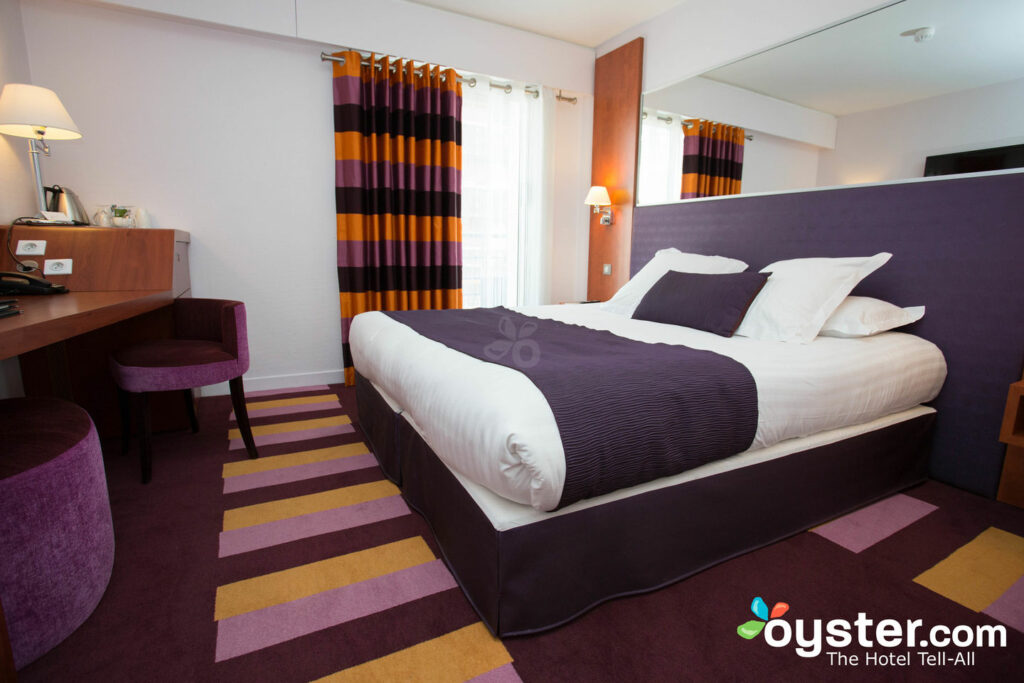
Hôtel Ampère Paris
16th and 17th Arrondissements (Bois de Boulogne), Paris, Ile-de-France, France
- Full Review
- Stylish business hotel within a 20-minute walk of the Arc de Triomphe
- Rooms include views of picturesque streets or the Eiffel Tower
- Landscaped terrace with umbrellas and stylish woven furniture
- Chic, cozy bar with fireplace and wood paneling
- Free Wi-Fi, business center, and four meeting rooms
- Buffet breakfast, for a fee
- Concierge at 24-hour front desk; museum passes can be purchased
- Dry cleaning, laundry, and parking for a fee
- Pet-friendly
- No fitness center, pool, or spa
Bottom Line
The Ampere Hotel is a stylishly modern four-pearl property located in the 17th Arrondissement, about a 20-minute walk to the Arc de Triomphe. It has a tranquil interior terrace surrounded by luxurious plants, and in cold weather, the bar offers a cozy place to have a drink around the fireplace. Its 97 rooms include suites, the largest of which has separate living rooms and terraces with views of the Eiffel Tower. The hotel's restaurant, Le Jardin d'Ampere, serves inventive French cuisine adjusted to the seasons, and a breakfast buffet for a fee. Geared toward business travelers, the hotel has four meeting rooms, a business center, and free Wi-Fi throughout. Travelers might want to also check out the elegant Hotel Monceau Wagram, which is in the same neighborhood.
Hotel & Amenities Photos

Junior Suite

Premium Room

Restaurants and Bars

Pets Allowed
Oyster hotel review, posh, modern property with a tranquil courtyard drawing business travelers.
Located on a chic street in a traditional limestone building, the Ampere Hotel has warm, modern interiors with rustic and traditional touches like unvarnished wood columns in the bar and paneled walls and marble-tile floors in the lobby. The lush garden terrace and bar with a fireplace makes the property feel like a sanctuary, far removed from the urban frenzy just blocks away. The lobby has a white leather, L-shaped banquette with silver pillows and a gray contemporary rug. Several daily newspapers are placed next to potted orchids. Just off the lobby is Bar Le Patio, whose dark wood, black lacquer, mirrored finishes, and splashes of purple are a contemporary take on Art Deco. The corner fireplace creates a cozy ambience, especially in the winter months. Outside the bar, through large French doors, is the brick garden terrace, surrounded by boxwood and trees, with black woven seating and slatted wood tables sheltered by square, white umbrellas. Restaurant Le Jardin d'Ampere, unfortunately, with its large white columns, gray accents, and sheers has all the charm of an airport departure lounge, and is an exception to the otherwise stylish design of this hotel. With its four electronically equipped meeting rooms and its proximity to the Espace Champerret exhibition space, the hotel draws mainly business travelers during the week, but tourists, especially couples and families, take advantage of lower weekend rates.
In the elegant 17th Arrondissement, a 20-minute walk to the Arc de Triomphe
The Ampere Hotel is in the largely residential 17th Arrondissement, a 20-minute walk to the Arc de Triomphe. It is near three metro stops: Pereire, a two-minute walk from the hotel; Pereire-Lavallois for the RER C, a four-minute walk; and Wagram, a five-minute walk. Three bus lines also converge near the hotel. The lovely Parc Monceau is a 15-minute walk away, as is the Rue de Levis, one of Paris' liveliest market streets. Picturesque Montmarte can be reached in about 20 minutes on public transportation. The RER C line stop at Pereire-Lavallois serves as a direct link to many monuments and museums: The Eiffel Tower is about a 22 minute ride, the Musee d'Orsay is 26 minutes, and St.-Michel-Notre Dame is a 36-minute ride. The Louvre is 21 minutes away on the N16 bus. Charles de Gaulle Airport is an hour away on RER C (changing a St. Michel-Notre Dame for RER B), or a 22- to 30 minute-drive, depending on traffic. Orly Airport is about an hour's drive.
Rooms range from Standard to Suites, some with Terraces and Eiffel Tower views
Ampere Hotel's 97 rooms, which range from 226 to 404 square feet, have views of picturesque streets, while some of the suites have terraces and views of the Eiffel Tower. The decor is either stark -- white walls and rose-toned wood furniture with brown fabrics -- or punched up with lots of color, including purple-yellow-and-red-striped drapes that match purple-accented pillows and throws. All rooms have air-conditioning, minibars, irons and ironing boards, safes, electric kettles for coffee and tea, and free Wi-Fi. Higher-end rooms have Nespresso makers and sitting areas with high quality sofas and chairs. The large windows have sheers and black-out drapes. Bathrooms, all with modern fittings and fixtures, vary: Higher-end rooms have bold orange tiles and separate glass-door showers and tubs, while those at the lower end have pink-and-brown marble with half-round stall showers, or shower-tub combos. Hairdryers, some of which are wall-mounted, are provided, along with plush terrycloth robes and L'Occitane toiletries.
Restaurant, bar with a fireplace, interior garden with umbrella seating, and a buffet breakfast
The Ampere Hotel has enough special touches to break out of the chain hotel mold -- it's distinguished by its boxwood planted terrace and a bar with Deco touches and a fireplace. The restaurant, Le Jardin d'Ampere, serves a buffet breakfast that includes eggs, sausage, and fresh fruit for a fee; and in good weather, guests can take it on the terrace. The restaurant known for inventive French cuisine varies its menu according to the seasons. The bar serves snacks and a full range of cocktails. Wi-Fi is free throughout the hotel, and the hotel includes a business center with computer, fax, and copy machines, and four meeting rooms with audiovisual equipment. French and international newspapers are available in the lobby, and there's a small gift shop. The 24-hour front desk provides concierge services, and guests like the convenience of being able to purchase museum passes here. Laundry and dry-cleaning services are available for a fee. On-site garage parking is also available.
Related Hotels
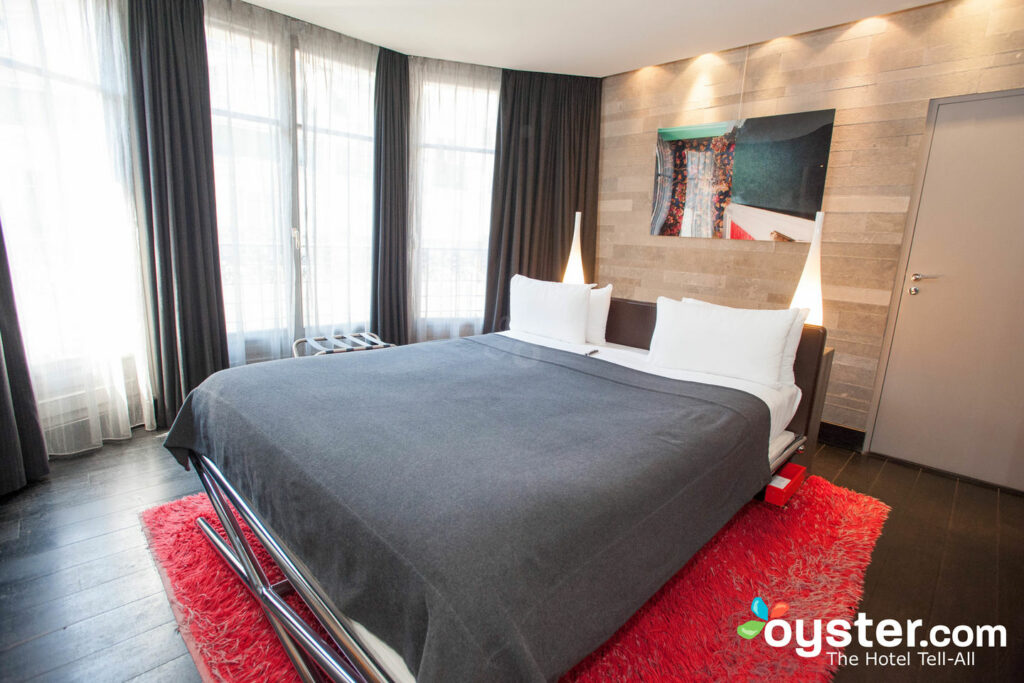
Hotel Sezz Paris
16th and 17th arrondissements (bois de boulogne).
Hotel Sezz is a small but perfectly designed luxury boutique with snazzy interiors and a slightly saucy side. The iconic Eiffel Tower is within walking distance, making the property ideal for couples wanting to ratchet up the romance. Sultry rooms and playful amenities encourage amorous…
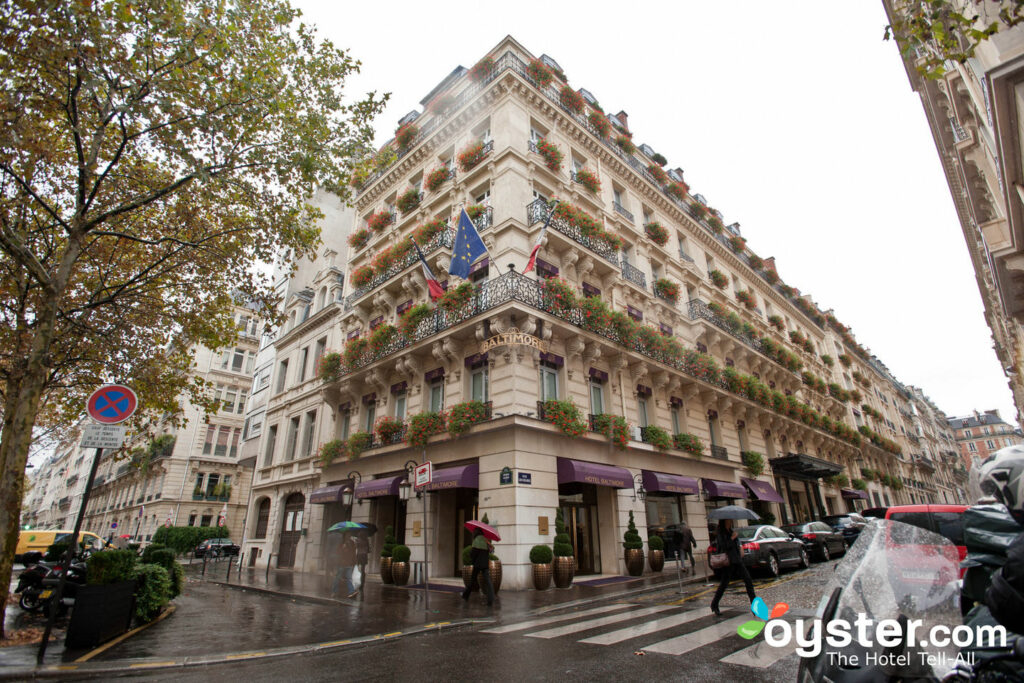

Sofitel Paris Baltimore Tour Eiffel
Situated in a stately 1892 townhouse that was converted into a luxury hotel in the 1920s, the upscale boutique Hotel Baltimore offers a charming Parisian experience with modern comforts. Outside, delicate flowers spill from wrought-iron window ledges, and inside, the lobby and hotel bar feature…
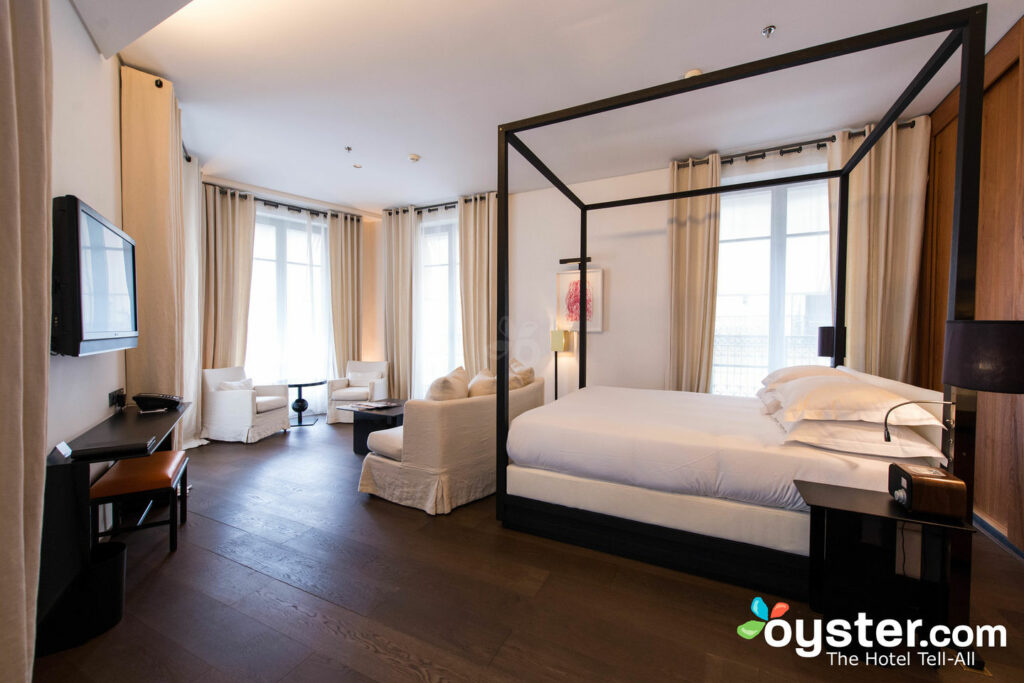
Le Metropolitan, a Tribute Portfolio Hotel, Paris
This four-pearl, 48-room hotel in central Paris is a sharp, historic base for exploring the city’s most famous attractions. The hotel is near bustling Place de Mexico, and a nine-minute walk to Trocadero Gardens, which has amazing Eiffel Tower views across the Seine (as well…
Air Conditioner
Balcony / terrace / patio, business center, dry cleaning, kids allowed, meeting / conference rooms, mini bar (with liquor), poolside drink service, room service, separate bedroom / living room space, swim-up bar.
Disclaimer: This content was accurate at the time the hotel was reviewed. Please check our partner sites when booking to verify that details are still correct.
View Top Offer For This Hotel
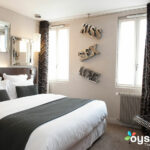
B Montmartre Hotel
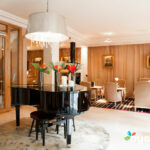
Hotel de Banville
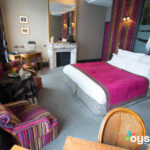
Hotel Regent's Garden - Astotel
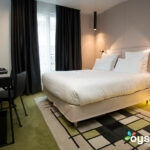
Hotel Felicien by Elegancia

Hotel Balmoral

Hotel Keppler
Nearby hotels.
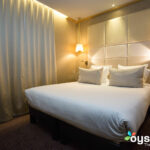
Hotel Armoni
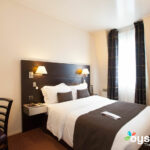
Hotel Magellan
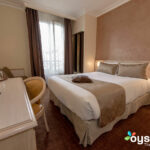
Hôtel Champerret Elysées
View offers for this hotel.
- Preplanned tours
- Daytrips out of Moscow
- Themed tours
- Customized tours
- St. Petersburg
Moscow Metro
The Moscow Metro Tour is included in most guided tours’ itineraries. Opened in 1935, under Stalin’s regime, the metro was not only meant to solve transport problems, but also was hailed as “a people’s palace”. Every station you will see during your Moscow metro tour looks like a palace room. There are bright paintings, mosaics, stained glass, bronze statues… Our Moscow metro tour includes the most impressive stations best architects and designers worked at - Ploshchad Revolutsii, Mayakovskaya, Komsomolskaya, Kievskaya, Novoslobodskaya and some others.
What is the kremlin in russia?
The guide will not only help you navigate the metro, but will also provide you with fascinating background tales for the images you see and a history of each station.
And there some stories to be told during the Moscow metro tour! The deepest station - Park Pobedy - is 84 metres under the ground with the world longest escalator of 140 meters. Parts of the so-called Metro-2, a secret strategic system of underground tunnels, was used for its construction.
During the Second World War the metro itself became a strategic asset: it was turned into the city's biggest bomb-shelter and one of the stations even became a library. 217 children were born here in 1941-1942! The metro is the most effective means of transport in the capital.
There are almost 200 stations 196 at the moment and trains run every 90 seconds! The guide of your Moscow metro tour can explain to you how to buy tickets and find your way if you plan to get around by yourself.
Moscow Metro Underground Small-Group Tour - With Reviews & Ratings
Moscow metro underground small-group tour.
- See more images
Tour Information
Key Details
- Mobile Voucher Accepted
- Free Cancellation
- Duration: 3 Hrs
- Language: English
- Departure Time : 10:00 AM
- Departure Details : Karl Marks Monument on Revolution Square, metro stop: Square of Revolution
- Return Details : Metro Smolenskaya
- If you cancel at least 4 day(s) in advance of the scheduled departure, there is no cancellation fee.
- If you cancel within 3 day(s) of the scheduled departure, there is a 100 percent cancellation fee.
- Tours booked using discount coupon codes will be non refundable.
Go beneath the streets on this tour of the spectacular, mind-bending Moscow Metro! Be awed by architecture and spot the Propaganda , then hear soviet stories from a local in the know. Finish it all up above ground, looking up to Stalins skyscrapers, and get the inside scoop on whats gone on behind those walls.
Know More about this tour
We begin our Moscow tour beneath the city, exploring the underground palace of the Moscow Metro. From the Square of Revolution station, famous for its huge statues of soviet people (an armed soldier, a farmer with a rooster, a warrior, and more), we’ll move onto some of the most significant stations, where impressive mosaics, columns, and chandeliers will boggle your eyes! Moreover, these stations reveal a big part of soviet reality — the walls depict plenty of Propaganda , with party leaders looking down from images on the walls. Your local guide will share personal stories of his/her family from USSR times, giving you insight into Russia’s complicated past and present. Then we’re coming back up to street level, where we’ll take a break and refuel with some Russian fast food: traditional pancakes, called bliny. And then, stomachs satiated, we are ready to move forward! We’ll take the eco-friendly electric trolleybus, with a route along the Moscow Garden Ring. Used mainly by Russian babushkas(grannies) during the day, the trolleybus hits peak hours in the mornings and evenings, when many locals use it going to and from their days. Our first stop will be the Aviator’s House, one of Stalin’s Seven Sisters, followed by the Ministry of Foreign Affairs — and you’ll hear the legends of what has gone on inside the walls. Throughout your Moscow tour, you’ll learn curious facts from soviet history while seeing how Russia exists now, 25 years after the USSR.
Local English-speaking guide
Pancake snack and drink
Additional food and drinks
Tickets for public transport
Souvenirs and items of a personal nature
Tips and gratuities for the guide
Additional Info
Confirmation will be received at time of booking
Dress standard: Please wear comfortable shoes for walking. For your Urban Adventure you will be in a small group of a maximum of 12 people
Traveler Reviews
This tour exceeded our expectations. Nikolai (Nick), our tour guide, was very knowledgeable, thorough, and has a great personality. He didn't take shortcuts and really covered everything that was on the agenda in great detail. We saw beautiful metro stations and learned the history behind them, including many of the murals and designs.
We did the tour with Anna her knowledge and understanding of the History surrounding the metro brought the tour alive. Well done Anna!
This tour was amazing!
Anna was a great tour guide. She gave us heaps of interesting information, was very friendly, and very kindly showed us how to get to our next tour.
Amazing beauty and history.
An excellent tour helped by an absolutely amazing guide. Anna gave a great insight into the history of the metro helped by additional material she had prepared.
great tour and guide - thanks again
great will do it again, Miriam ke was very good as a guide she has lived here all here life so knew every interesting detail.a good day

Tour Details
Moscow metro tour: architectural styles of the subway.

Duration: 2 hours
Categories: Culture & History, Sightseeing
This metro tour of Russia’s capital and most populous city, Moscow, is your chance to get a unique insight into the beautiful and impressive architecture of the city's underground stations. Admire their marble walls and high ceilings representing Stalin's desire for glory after World War 2, and see first-hand how the interiors change with the rise of new political eras. Your guide will lead you through the complex network, which is one of the most heavily used rapid transit systems worldwide, with over two billion travelers in 2011.
Opened in 1935, Moscow’s underground system, now 190 miles (305 km) long with 185 stations, is today one the largest and most heavily used rapid transit systems in the world. On this Moscow metro tour, discover the impressive architecture of Moscow’s underground stations and learn how they reflect the Soviet era.
Getting around by metro, your local guide will take you through parts of Moscow’s infamous history. Stop at stations built during the time of the USSR (Soviet Union) that are praised as one of the most extravagant architectural projects from Stalin’s time. After World War 2, he was keen on establishing Stalinist architecture to represent his rising regime and a recognized empire. Learn how when his successor started the de-Stalinization of the former Soviet Union in 1953, the extravagancy of the architecture was toned down.
Discover how the unique character of each station reflected several different eras. While stations like Kievskaya and Slavyansky Bulvar have pompous halls and high stucco ceilings brimming with extravagant decorations, those built later, like Volzhskaya, are lightly adorned with sparse furnishings. Architect Alexey Dushkin and painter Alexander Deyneka were just two of the many artists who made these magnificent landmarks possible.
Revel in Moscow's glory days, as well as the years of scarcity, on this fascinating Moscow metro experience. Conclude your tour at one of the central stations in Moscow. If you're lucky, you may even find the secret entrance to the unconfirmed Metro-2, a parallel underground system used by the government -- a mystery which has neither been denied nor confirmed today.
Nearby tours

Soviet-Era Walking Tour in Moscow: Lubyanka Square and the Gulag History Museum
If you love history, would like to know more about Russia’s past, or just want to take an interesting walk, book this guided Moscow walking tour of Soviet-era sites. With your expert guide, walk through Lubyanka Squ...

Walking Tour of Moscow's Kolomenskoye Estate
On this walking tour through the Kolomenskoye Estate in Moscow, immerse yourself in Russia’s interesting royal history. Walk around the UNESCO World Heritage-listed Ascension Church, built in 1532, and enter the Hou...

Moscow Cultural Walking Tour: Red Square, Kitay-Gorod and St Basil's Cathedral
Take a guided walking tour of Moscow's cultural highlights, like the beautiful UNESCO World Heritage-listed Red Square, said to be the central square of Russia. Walk through the adjoining district Kitay-Gorod, one of ...

Kremlin Grounds, Cathedrals and Patriarch's Palace Tour from Moscow
A great three hour tour exploring the Kremlin Grounds, Cathedrals and Patriarch's Palaces in Moscow! The small city in the center of Moscow, once the residence of Czars and Patriarchs, contains Russia's main cathedra...

Moscow City Tour
The Moscow City Tour covers all the highlights and most beautiful places in the enchanting Russian capital. The tour begins with a stop at the Red Square and St. Basil's Cathedral, the architectural masterpiece and w...
Culture Shock Rating
We have a wide range of tours designed to give you an insight into the destination you're travelling in and there is something for everybody. The culture shock ratings considers the destination visited, transport used, activities undertaken and that "Wow, I'm really not at home now!" factor. While generalisations are always tricky, a summary of our gradings is as follows…
This is the least confronting of our tour range. Transport used on the trip is either private or a very comfortable public option, the activities included are usually iconic sites and locations that are not all too confronting.
The tour can include a mix of private and public transport providing a level of comfort that is slightly below what you would experience at home. Sites visited are usually iconic sites, tours can also include market visits, visits to communities etc that provide the traveller with a fantastic insight into destination.
Expect to rough it for parts of this tour, whether it's a packed public bus where you are forced to stand, a visit to a local market, a local community, you are sure to have an experience that is very different from what you're used to at home.
The comforts of your home town and the environment you are used to are more of a rarity. Expect some challenging transport options, visits to local sites and areas that don't resemble anything at home.
You're out there in the global community! You are likely to be exposed to the elements, travel in whatever means of transport is available and basically take it as it comes, whatever comes! It can be tough.
Physical Rating
Our physical rating gives you an idea of how much huffing and puffing you can expect on the tour. While generalisations are always tricky, a summary of our gradings is as follows…
These tours have very limited physical activity. Usually climbing in and out of the transport provided, walking through sites, markets etc included in the itinerary.
These tours have a bit of physical activity but nothing that should challenge you too much. This could be climbing on and off public transport through to a walk through the destination you're travelling in, they can include walking only tours or a combination of walking and transport.
These tours involve a bit of physical activity from walking up and down hills in the destination you're travelling in or the surrounding areas. Climbing on and off local transport or riding a bike up to 30 kms along predominantly flat terrain or jumping in a kayak for a gentle paddle on flat water.
These Tours will provide you with some solid physical activity. Whether its bike riding, walking, trekking, kayaking or riding on public transport you will need to have a good level of fitness to enjoy this tour.
Be prepared for some serious physical activity. These tours are our most challenging and involve some serious walking, hiking or bike riding. Can involve step climbs by foot or pedal and some challenging public transport options in the destination you are travelling.
Luxury Rating
Some trips are like a stroll on the beach, while others have you trekking alpine passes. Some of you thrive on camping out on the savannah, while others may prefer a hot shower and a comfortable bed in a lodge. Follow the grading systems below to find the right trip for you.
To help you choose the trip that's right for you, we've broken all of our trips down into four service levels. Measuring the comfort level of the accommodation and transport. So whether you're travelling on a budget and want to save money by using public transport, or prefer upgraded accommodation and are happy to pay a little more, then we have a level for you.
This is grassroots travel at its most interesting
Authentic experiences with some of the comforts of home
For those who like to travel in comfort
All the unique experiences wrapped up with a gold ribbon

- Une offre pour les fêtes Profitez de 35% de réduction sur tous nos tarifs jusqu'au mois de février 2019 !

WELCOME TO THE HOTEL
The Ampere Hotel welcomes you in its exceptional district in the heart of the Parisian capital during your stay. Just a few steps away from many strategic points, it is the perfect location for your holiday and/or business trip.
GET TO THE HOTEL
Contact form.
Our team is at your disposal to answer all your questions. Fill in this contact form, we will get back to you as soon as possible.
Page missing : FormulaireContact/templates/default/tpl
Claudia Looi
Touring the Top 10 Moscow Metro Stations
By Claudia Looi 2 Comments

Komsomolskaya metro station looks like a museum. It has vaulted ceilings and baroque decor.
Hidden underground, in the heart of Moscow, are historical and architectural treasures of Russia. These are Soviet-era creations – the metro stations of Moscow.
Our guide Maria introduced these elaborate metro stations as “the palaces for the people.” Built between 1937 and 1955, each station holds its own history and stories. Stalin had the idea of building beautiful underground spaces that the masses could enjoy. They would look like museums, art centers, concert halls, palaces and churches. Each would have a different theme. None would be alike.
The two-hour private tour was with a former Intourist tour guide named Maria. Maria lived in Moscow all her life and through the communist era of 60s to 90s. She has been a tour guide for more than 30 years. Being in her 60s, she moved rather quickly for her age. We traveled and crammed with Maria and other Muscovites on the metro to visit 10 different metro stations.

Arrow showing the direction of metro line 1 and 2

Moscow subways are very clean
To Maria, every street, metro and building told a story. I couldn’t keep up with her stories. I don’t remember most of what she said because I was just thrilled being in Moscow. Added to that, she spilled out so many Russian words and names, which to one who can’t read Cyrillic, sounded so foreign and could be easily forgotten.
The metro tour was the first part of our all day tour of Moscow with Maria. Here are the stations we visited:
1. Komsomolskaya Metro Station is the most beautiful of them all. Painted yellow and decorated with chandeliers, gold leaves and semi precious stones, the station looks like a stately museum. And possibly decorated like a palace. I saw Komsomolskaya first, before the rest of the stations upon arrival in Moscow by train from St. Petersburg.
2. Revolution Square Metro Station (Ploshchad Revolyutsii) has marble arches and 72 bronze sculptures designed by Alexey Dushkin. The marble arches are flanked by the bronze sculptures. If you look closely you will see passersby touching the bronze dog's nose. Legend has it that good luck comes to those who touch the dog's nose.

Touch the dog's nose for good luck. At the Revolution Square station

Revolution Square Metro Station
3. Arbatskaya Metro Station served as a shelter during the Soviet-era. It is one of the largest and the deepest metro stations in Moscow.

Arbatskaya Metro Station
4. Biblioteka Imeni Lenina Metro Station was built in 1935 and named after the Russian State Library. It is located near the library and has a big mosaic portrait of Lenin and yellow ceramic tiles on the track walls.

Lenin's portrait at the Biblioteka Imeni Lenina Metro Station

5. Kievskaya Metro Station was one of the first to be completed in Moscow. Named after the capital city of Ukraine by Kiev-born, Nikita Khruschev, Stalin's successor.

Kievskaya Metro Station
6. Novoslobodskaya Metro Station was built in 1952. It has 32 stained glass murals with brass borders.

Novoslobodskaya metro station
7. Kurskaya Metro Station was one of the first few to be built in Moscow in 1938. It has ceiling panels and artwork showing Soviet leadership, Soviet lifestyle and political power. It has a dome with patriotic slogans decorated with red stars representing the Soviet's World War II Hall of Fame. Kurskaya Metro Station is a must-visit station in Moscow.

Ceiling panel and artworks at Kurskaya Metro Station

8. Mayakovskaya Metro Station built in 1938. It was named after Russian poet Vladmir Mayakovsky. This is one of the most beautiful metro stations in the world with 34 mosaics painted by Alexander Deyneka.

Mayakovskaya station

One of the over 30 ceiling mosaics in Mayakovskaya metro station
9. Belorusskaya Metro Station is named after the people of Belarus. In the picture below, there are statues of 3 members of the Partisan Resistance in Belarus during World War II. The statues were sculpted by Sergei Orlov, S. Rabinovich and I. Slonim.

10. Teatralnaya Metro Station (Theatre Metro Station) is located near the Bolshoi Theatre.

Teatralnaya Metro Station decorated with porcelain figures .

Taking the metro's escalator at the end of the tour with Maria the tour guide.
Have you visited the Moscow Metro? Leave your comment below.
January 15, 2017 at 8:17 am
An excellent read! Thanks for much for sharing the Russian metro system with us. We're heading to Moscow in April and exploring the metro stations were on our list and after reading your post, I'm even more excited to go visit them. Thanks again 🙂
December 6, 2017 at 10:45 pm
Hi, do you remember which tour company you contacted for this tour?
Leave a Reply Cancel reply
You must be logged in to post a comment.
Please go to the Instagram Feed settings page to create a feed.

IMAGES
VIDEO
COMMENTS
Indeed, from 1889, the Eiffel Tower was used as a laboratory of measurements and scientific experiments. Considerable scientific apparatus was installed (barometers, anemometers, lightning conductors etc.). Moreover, Gustave Eiffel set himself an office aside on the third floor to make astronomical and physiological observations.
Paris RER operates a train from Péreire Levallois to Champ de Mars Tour Eiffel every 20 minutes. Tickets cost €3 - €5 and the journey takes 15 min. Alternatively, Bus RATP operates a bus from Charles de Gaulle - Etoile - Wagram to Tour Eiffel every 15 minutes. Tickets cost €1 - €3 and the journey takes 13 min.
What companies run services between Eiffel Tower, France and Ampère, Paris, France? Paris RER operates a train from Champ de Mars Tour Eiffel to Péreire Levallois every 20 minutes. Tickets cost €3 - €5 and the journey takes 13 min. Alternatively, Bus RATP operates a bus from Bosquet - Rapp to Pereire - Maréchal Juin every 10 minutes.
On the Eiffel Tower, 72 names of French scientists, engineers, and mathematicians are engraved in recognition of their contributions. Gustave Eiffel chose this "invocation of science" because of his concern over the protests against the tower, and chose names of those who had distinguished themselves since 1789. The engravings are found on the sides of the tower under the first balcony, in ...
In the spaces thus created, Gustave Eiffel had the names of scholars inscribed in golden capital letters 60 centimeters high, large enough to be read from the ground. Eighteen names are thus written on each side, in a random order. In this way, he placed his Tower under the auspices of science and progress as part of commemorations of the 100th ...
You have the right to ask the Société de la Tour Eiffel for access to your personal data, their rectification or erasure, or a limitation of the processing relating to your person by contacting: Société de la Tour Eiffel - 11, avenue de Friedland - 75008 Paris, France - Telephone: 01 53 43 07 06 - Fax: 01 42 66 01 54 - E-mail: contact ...
André-Marie Ampère est l'un des 72 savants dont le nom est inscrit sur le premier étage de la tour Eiffel. Il est le 13e, sur la face tournée vers le Trocadéro. André-Marie Ampère, mathématicien et physicien, est né à Lyon, sur la paroisse de Saint-Nizier, le 22 janvier 1775, de Jean-Jacques Ampère, négociant, et de Jeanne ...
The Eiffel Tower on social media. See more photos. Discover or visit the tower: buy a ticket (10.5 to 26.10 € maximum for adults and 2.6 to 13.10 € for children and young people), news and practical information.
The Eiffel Tower (/ ˈ aɪ f əl / EYE-fəl; French: Tour Eiffel [tuʁ ɛfɛl] ⓘ) is a wrought-iron lattice tower on the Champ de Mars in Paris, France.It is named after the engineer Gustave Eiffel, whose company designed and built the tower from 1887 to 1889.. Locally nicknamed "La dame de fer" (French for "Iron Lady"), it was constructed as the centerpiece of the 1889 World's Fair, and to ...
Metro stations Trocadéro (line 9) and Ecole Militaire (line 8) are 15 minutes by foot from the Tower. Another option is line C of the RER train network, which serves the Champ de Mars-Tour Eiffel station, located 5 minutes' walk from Entrance 1. You can also come by bus: lines 82, 30 and 42 serve stops 5 minutes' walk from Entrance 2 of ...
Ampère derived mathematical laws describing the relationship between electric current and magnetism. electricity electric engineering paris eiffel tower electromagnetism
The Newton of electricity. In 1826 he published "The Mathematical Theory of Electrodynamic Phenomena Deduced Solely from Experiment", a book in which he states that "magnetism is electricity in motion" and "magnetic phenomena depend only on the existence and motion of electrical charges". Ampère explained the existence of permanent ...
Vous disposez du droit de demander à la Société de la Tour Eiffel l'accès à vos données à caractère personnel, leur rectification ou effacement, ou une limitation du traitement relatif à votre personne en vous adressant à : Société de la Tour Eiffel - 11, avenue de Friedland - 75008 Paris, France - Téléphone : 01 53 43 07 06 ...
Biography. André-Marie Ampère is one of 72 scientists whose name is on the first floor of the Eiffel Tower. He is the 13 th, on the side facing the Trocadero.. André-Marie Ampère, mathematician and physicist, was born in Lyon, on the parish of Saint-Nizier, January 22, 1775, Jean-Jacques Ampère, merchant, and Jeanne-Antoinette Sarcev de Sutières.
André-Marie Ampère (UK: / ˈ ɒ̃ p ɛər, ˈ æ m p ɛər /, US: / ˈ æ m p ɪər /, French: [ɑ̃dʁe maʁi ɑ̃pɛʁ]; 20 January 1775 - 10 June 1836) was a French physicist and mathematician who was one of the founders of the science of classical electromagnetism, which he referred to as "electrodynamics".He is also the inventor of numerous applications, such as the solenoid (a term ...
The Ampere Hotel welcomes you in its exceptional district in the heart of the Parisian capital during your stay. Just a few steps away from many strategic points, it is the perfect location for your holiday and/or business trip. ... Tour Eiffel, direct 15 minutes by RER C Direct by line 3: Department stores, Havre Caumartin, Galeries Lafayette ...
Find local businesses, view maps and get driving directions in Google Maps.
The Ampere Hotel is a stylishly modern four-pearl property located in the 17th Arrondissement, about a 20-minute walk to the Arc de Triomphe. It has a tranquil interior terrace surrounded by luxurious plants, and in cold weather, the bar offers a cozy place to have a drink around the fireplace. Its 97 rooms include suites, the largest of which ...
Moscow Metro. The Moscow Metro Tour is included in most guided tours' itineraries. Opened in 1935, under Stalin's regime, the metro was not only meant to solve transport problems, but also was hailed as "a people's palace". Every station you will see during your Moscow metro tour looks like a palace room. There are bright paintings ...
Overview. Go beneath the streets on this tour of the spectacular, mind-bending Moscow Metro! Be awed by architecture and spot the Propaganda, then hear soviet stories from a local in the know.Finish it all up above ground, looking up to Stalins skyscrapers, and get the inside scoop on whats gone on behind those walls.
Opened in 1935, Moscow's underground system, now 190 miles (305 km) long with 185 stations, is today one the largest and most heavily used rapid transit systems in the world. On this Moscow metro tour, discover the impressive architecture of Moscow's underground stations and learn how they reflect the Soviet era.
The Ampere Hotel welcomes you in its exceptional district in the heart of the Parisian capital during your stay. Just a few steps away from many strategic points, it is the perfect location for your holiday and/or business trip. ... 15 minutes walk from the Arc de Triomphe. Tour Eiffel, direct 15 minutes by RER C. Direct by line 3: Department ...
The two-hour private tour was with a former Intourist tour guide named Maria. Maria lived in Moscow all her life and through the communist era of 60s to 90s. She has been a tour guide for more than 30 years. Being in her 60s, she moved rather quickly for her age. We traveled and crammed with Maria and other Muscovites on the metro to visit 10 ...